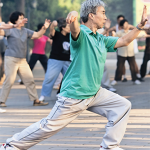
Simon Mayer / shutterstock.com
While medical advances in rheumatoid arthritis (RA) have led to improvements in disease control and quality of life for patients worldwide, the rate for stable remission remains low.1 Management of RA symptoms is traditionally accomplished through a combination of medications and nonpharmacological interventions.2 This approach can prevent the development of secondary adverse health outcomes.
Two common nonpharmacologic interventions are physical therapy and physical activity. The scientific evidence for these interventions continues to grow. However, not all medical providers are aware of the benefits of physical therapy and physical activity, nor do they know when to prescribe physical therapy.2,3
When it comes to physical therapy, physiotherapists (PTs) provide insightful knowledge. PTs rely on physical (e.g., functional, range of motion, muscle strength, or postural) and behavioristic assessments (e.g., behaviors associated with fear-avoidance beliefs) when tailoring interventions to increase bodily function or physical activity in general.2,4-6 When a home-exercise program is prescribed, 50–65% of patients fail to adhere to the program. The presence of pain, low levels of physical activity and low self-efficacy are believed to create barriers between the patient and the desired treatment goal of increased physical activity.7,8
A review found that clinical practice guidelines regarding physiotherapy lacked detail concerning intensity, frequency, duration and type of activity for desired effects. Despite this, guidelines keep emphasizing the importance of these nonpharmacological interventions.2,6,9
This article describes how physical therapy, through physical activity and exercise, can benefit patients with RA and compares the impact of these nonpharmacologic interventions with outcomes of medical therapy. Further, this article highlights the clinical reasoning behind the design of exercise interventions for patients with RA.
Defining Physical Activity
The terms physical activity and exercise are often used interchangeably by patients and clinicians. However, physical activity is defined as any bodily movement produced by skeletal muscles that requires energy expenditure. This movement includes daily activities, such as walking, cycling or participating in sports.
What makes exercise different? Exercise, considered a subset of physical activity, is planned, structured and repetitive, and has a final or an intermediate objective to improve or maintain physical fitness.10 Exercise can be further divided into aerobic or anaerobic exercise. Aerobic exercise (commonly known as cardio) is low- to high-intensity exercise that relies mainly on the aerobic energy-generating process, requiring a high supply of oxygen to adequately meet energy demands. Generally, light- to moderate-intensity activities (e.g., walking, cycling or swimming) are sufficiently supported by aerobic metabolism.
Anaerobic exercise relies mainly on the anaerobic energy-generating process and causes lactate to form in the muscles. This process occurs when the supply of oxygen cannot support the energy demands in high-intensity activities (e.g., sprints or heavy lifts).
The American College of Sports Medicine provides lists of activities that are generally classified as aerobic and anaerobic on the basis of population data. However, like medications, one must consider patient-specific attributes, such as strength, cardiovascular fitness and metabolism, to properly describe energy expenditures for specific activities in a given patient.
Prescribing Exercise
Respecting the potency of pharmacological interventions comes naturally to healthcare providers. When prescribing medications, physicians must inform their patients of the appropriate dose, frequency and duration of medication, as well as potential side effects, alternative therapies and adverse events. This information ensures informed consent, enhances medication adherence and helps avoid or detect early adverse health effects associated with the medication.
With physical activity and exercise, the same reasoning holds true. Exercises are prescribed by informing the patient of the appropriate duration, intensity and frequency, as well as describing potential side effects and adverse events. Intensity and frequency are essentially the activity dose, and intensity refers to the desired level of energy expenditure during performance of the activity.
Data indicate that exercise and physical activity are potent interventions for managing RA symptoms and its consequences, plausibly leading to adverse health effects when poorly prescribed.11 Despite the heterogeneity of exercise interventions, the rate of adverse effects is low, and drop-out rates from intervention studies are typically lower than from drug trials.12-14
Pain
Pain is a common symptom in RA, with as many as 68–88% of patients rating pain as one of their top three priorities.15 The metabolic benefits of exercise, through down-regulating pro-inflammatory cytokines that attribute to pain, appear to outweigh the momentary increase in pain due to biomechanical stress.16 Many exercise studies of land-based aerobic and strength interventions reveal decreases in self-reported pain once tissue adapts. Improvements in self-perceived pain from these forms of exercise yield modest benefits (effect sizes of -0.53 [-1.09, 0.04]).5
As tissue adaptation occurs, activities or joint movements previously hindered by pain become possible. However, if the adaptation happens too quickly or at too great a mechanical load, pain may increase. Increased pain associated with inappropriately dosed exercise may lead to avoidance behaviors, adversely resulting in a decrease in total physical activity levels or lowering adherence to an exercise regimen.17 If the aim of an exercise intervention is to increase bone mass, lean muscle mass or increase cardiorespiratory fitness (CRF), patients need to understand how and when to modify exercise and what is acceptable as exercise-related discomfort vs. overstressing joints and soft tissue.18 Patient education can enhance adherence to exercise interventions and ensure proper modes of exercise, frequency, intensity and duration occur, as well as increase understanding of what is acceptable (i.e., typical) exercise-induced discomfort.19
RA & Cardiovascular Health
Although cardiovascular disease (CVD) events occur more frequently in patients with RA than in their healthy peers (3.43 and 0.59 per 100 person-years, respectively), traditional risk factors for CVD events seem to only partially explain this phenomenon, and specific rheumatic cytokines may explain the differences in risk.20-22 Recently, CVD-associated fatalities have declined, and biologic therapies are being hailed as the reason for this new trend, because they appear to attenuate inflammatory markers.23,24
A traditionally strong factor to consider in CVD risk is physical activity. Adults with RA accumulate less time spent engaged in physical activity than healthy peers (1,836 vs. 2,199 minutes per week, P=0.001).25 Physically inactive patients with RA have a higher probability of a 10-year CVD event (higher systolic blood pressure, P=0.006, cholesterol, P<0.001, low-density lipoprotein, P=0.01) when compared with physically active RA subjects, suggesting that low physical activity levels may serve as an independent risk factor for CVD events in adults with RA.6,26
Improving the lipid profile of RA patients is important to lower the risk of CVD events, and exercise training can offer this effect.27,28 Although total time spent engaging in physical activity is of great importance, the literature on how exercise improves habitual physical activity is scarce.
Instead, exercise interventions have looked to improve the CRF profile (commonly defined as VO2 max in mL/kg/min) of RA patients, a profile historically 20–30% lower than that of healthy controls.11 Not specific to RA patients, links between CRF and dyslipidemia have been noted, making interventions aimed at improving CRF interesting for attenuating the CVD risk in RA.29
Results from a Cochrane review revealed that land-based aerobic exercise interventions significantly improved aerobic capacity (VO2 max in mL/kg/min) with an effect size of 0.99 (0.29, 1.68).5 Although water-based aerobic exercise had an overall effect size of 0.47, the effect was not significant (-0.04, 0,98), making it hard to deduce its potency.5 Presently, it is difficult to determine the most suitable intensity, frequency or duration for optimal CR improvements in RA, because the number of studies is low.
Disease Activity—Exercise
Disease activity in RA has clinical meaning, because patients with higher disease activity report lower quality of life and spend less time being physically active.30,31 There are many ways of measuring disease activity in RA.32 In exercise interventions, the Disease Activity Scale (DAS-28) is commonly used. Despite its shortcomings in differentiating disease activity, studies tend to define a DAS greater than 5.1 as active disease, less than 3.2 as low disease activity and less than 2.6 as remission.33,34 Today, it is widely considered safe to indulge in physical activity and exercise no matter the level of disease activity.35
In an exercise study conducted for patients with highly active RA (7.0), the exercise group demonstrated a greater decrease in disease activity compared with the control group (effect size of 0.49 and 0.29 respectively), paving the way for more studies on physical activity and disease activity, although not all studies reveal significant positive effects.36,37
Examining how exercise may potentially decrease RA disease activity is a relatively new focus. A randomized controlled trial of the safety of long-term, high-intensity aerobic exercise demonstrated improvements in disease activity (DAS lowered by 0.14).38 However, in the aggregrate, a Cochrane review deemed the effects of land-based aerobic and strength programs on RA disease activity not significant (ES= 0.16 [-0.39, 0.06]).5 Many pharmacological interventions prefer to express disease activity outcomes as a percentage of study participants that reach remission or have low or active disease, making comparisons between the two fields difficult.24 Attenuating inflammatory markers and increasing pain tolerance are believed effects of exercise that can influence disease activity.11 However, it is hard to determine what intensity, duration or frequency is needed for a patient, because the scientific evidence is scarce.
Functional Ability & Exercise Interventions
Functional ability is often evaluated with a Health Assessment Questionnaire (HAQ), and a decrease of <0.22 is considered clinically meaningful.39 The HAQ has been used as a primary outcome to evaluate the benefits of exercise interventions for several years. In a review of nine RCTs, the effects of aerobic exercise on HAQ was defined as a standardized mean difference of 0.24 ([95% CI 0.10, 0.38], P=0.001; I2=29%).40 Marcora et al found progressive resistance strength training performed, on average, 2.5 times a week over 12 weeks resulted in increased lean muscle leg mass (by 839 grams, P<0.001) and improved modified HAQ scores by -0.25.41 However, another study found little to no effect on daily functioning (multi-dimensional HAQ) following an exercise intervention.18
Rheumatoid Cachexia
Rheumatoid cachexia (RC), a feature of RA, is a down-regulated state of anabolic muscle growth.42 Suspected culprits are malnutrition, suppressed IGF regulation, circulating pro-inflammatory cytokines (such as CRP and IL-6) and inadequate physical activity.43,44 RC may be present in as many of 53% of adults with RA.45
Traditionally, BMI has been the focus of CVD risk in RA patients, because a high BMI is associated with increased relative risk of CVD in the presence of obesity (RR=1.16; 95% CI 1.03, 1.29).46 A low BMI can also increase the risk of CVD events (hazard ratio [HR] 3.34, 95% confidence interval [95% CI] 2.23–4.99).47 Many exercise interventions were designed to normalize the BMI of RA subjects. However, BMI may not be a suitable measure of RC; among women with RA, 88.9% had a normal BMI.48 Thus, lean body mass may be a more suitable measure to use. It is unclear how the presence of RC affects the risk of CVD in RA, because prospective studies are lacking.49
Improving lean muscle mass can be achieved through tailored strength exercise at 80% of one repetition maximum, twice a week for 24 weeks, yielding small effects (ES=0.28), but the physical exertion of these interventions comes with an increased energy expenditure that may accentuate aspects, such as malnutrition, if not adequately prescribed.18 At a three-year follow-up, the improvements in muscle mass experienced by the exercise group did not persist, indicating that supervision may play a big role in the exercise-treatments of RC.50
The Cost of Treating RA
In a clinical setting, exercise interventions should be administrated by a specialist in the field of activity-related physiology. Although doctors specialize in the field of pharmaceuticals, physiotherapists are often regarded as experts because they have the background in exercise science, pathology and movement science.
When reviewing the benefits of exercise in RA, it is imperative to look at treatment costs. In a review, the biologic infliximab was cost effective to less than 1% if willingness to pay was set to $50,000/QALY.51 In early RA, the cost range of $27,346–44,881 per QALY was found for TNF antagonists, and a simple hand-strengthening program was $23,857 per QALY.52 Cost-effectiveness studies are scarce in nonpharmaceutical trials, but the few that exist are interesting. This is an area in need of further research.
One must consider patient-specific attributes, such as strength, cardiovascular fitness & metabolism, to properly describe energy expenditures for specific activities in a given patient.
Prescribe Exercise with Competence
The effects and potency of exercise and physical activity should not be underestimated when caring for patients with RA, but it cannot be prescribed without competence. A poorly dosed physical activity intervention can be counterproductive and enforce pain avoidance behaviors that make future exercise interventions problematic, if not impossible.17
Encouraging physical activity and exercise as main components of disease management is essential in clinical communications with patients. However, ensuring these interventions are prescribed properly is paramount.
Physical therapy is a suitable option for these patients. PTs are able to evaluate patient needs and prescribe appropriately tailored exercise and physical activity interventions at the correct dose and duration.
 August Flodén, PT, is a physiotherapist in the Department of Physical Therapy at Kullbergska Sjukhuset, Sweden. Having completed his master’s thesis in public health, he is currently working as a research assistant at Karolinska Institute, Stockholm. His research interests are the effects of vigorous exercise on joint inflammation, quality of life and comorbidity in adults and children with rheumatoid arthritis.
August Flodén, PT, is a physiotherapist in the Department of Physical Therapy at Kullbergska Sjukhuset, Sweden. Having completed his master’s thesis in public health, he is currently working as a research assistant at Karolinska Institute, Stockholm. His research interests are the effects of vigorous exercise on joint inflammation, quality of life and comorbidity in adults and children with rheumatoid arthritis.
References
- Dale J. Advances in the management of rheumatoid arthritis. Scott Med J. 2015 Aug;60(3):108–114.
- Daien CI, Hua C, Combe B, Landewe R. Nonpharmacological and pharmacological interventions in patients with early arthritis: A systematic literature review informing the 2016 update of EULAR recommendations for the management of early arthritis. RMD Open. 2017;3(1):e000404.
- Singh JA, Saag KG, Bridges SL Jr., et al. 2015 American College of Rheumatology Guideline for the Treatment of Rheumatoid Arthritis. Arthritis Rheumatol. 2016 Jan;68(1):1–26.
- Kavuncu V, Evcik D. Physiotherapy in rheumatoid arthritis. MedGenMed. 2004 May 17;6(2):3.
- Hurkmans E, van der Giesen FJ, Vliet Vlieland TP, et al. Dynamic exercise programs (aerobic capacity and/or muscle strength training) in patients with rheumatoid arthritis. Cochrane Database Syst Rev. 2009 Oct 7;(4):Cd006853.
- Agca R, Heslinga SC, Rollefstad S, et al. EULAR recommendations for cardiovascular disease risk management in patients with rheumatoid arthritis and other forms of inflammatory joint disorders: 2015/2016 update. Ann Rheum Dis. 2017;76(1):17–28.
- Bassett SF. The assessment of patient adherence to physiotherapy rehabilitation. N Z J Physiother. 2003;31(2):60–66.
- Jack K, McLean SM, Moffett JK, Gardiner E. Barriers to treatment adherence in physiotherapy outpatient clinics: A systematic review. Man Ther. 2010 Jun;15(3):220–228.
- Hurkmans EJ, Jones A, Li LC, Vliet Vlieland TP. Quality appraisal of clinical practice guidelines on the use of physiotherapy in rheumatoid arthritis: A systematic review. Rheumatology (Oxford). 2011 Oct;50(10):1879–1888.
- Caspersen CJ, Powell KE, Christenson GM. Physical activity, exercise, and physical fitness: Definitions and distinctions for health-related research. Public Health Rep. 1985 Mar–Apr;100(2):126–131.
- Cooney JK, Law RJ, Matschke V, et al. Benefits of exercise in rheumatoid arthritis. J Aging Res. 2011 Feb 13;2011:681640.
- Iversen MD, Brawerman M, Iversen CN. Recommendations and the state of the evidence for physical activity interventions for adults with rheumatoid arthritis: 2007 to present. Int J Clin Rheumtol. 2012 Oct 1;7(5):489–503.
- Kelley GA, Kelley KS. Dropouts and compliance in exercise interventions targeting bone mineral density in adults: A meta-analysis of randomized controlled trials. J Osteoporos. 2013;2013:250423.
- Kothawala P, Badamgarav E, Ryu S, et al. Systematic review and meta-analysis of real-world adherence to drug therapy for osteoporosis. Mayo Clin Proc. 2007 Dec;82(12):1493–1501.
- Heiberg T, Finset A, Uhlig T, Kvien TK. Seven year changes in health status and priorities for improvement of health in patients with rheumatoid arthritis. Ann Rheum Dis. 2005 Feb;64(2):191–195.
- Metsios GS, Stavropoulos-Kalinoglou A, Sandoo A, et al. Vascular function and inflammation in rheumatoid arthritis: The role of physical activity. Open Cardiovasc Med J. 2010 Feb 23;4:89–96.
- Lööf H, Demmelmaier I, Henriksson EW, et al. Fear-avoidance beliefs about physical activity in adults with rheumatoid arthritis. Scand J Rheumatol. 2015;44(2):93–99.
- Lemmey AB, Marcora SM, Chester K, et al. Effects of high-intensity resistance training in patients with rheumatoid arthritis: A randomized controlled trial. Arthritis Rheum. 2009 Dec 15;61(12):1726–1734.
- Mayoux-Benhamou A, Giraudet-Le Quintrec JS, Ravaud P, et al. Influence of patient education on exercise compliance in rheumatoid arthritis: A prospective 12-month randomized controlled trial. J Rheumatol. 2008;35(2):216–223.
- del Rincón ID, Williams K, Stern MP, et al. High incidence of cardiovascular events in a rheumatoid arthritis cohort not explained by traditional cardiac risk factors. Arthritis Rheum. 2001 Dec;44(12):2737–2745.
- Barra LJ, Pope JE, Hitchon C, et al. The effect of rheumatoid arthritis-associated autoantibodies on the incidence of cardiovascular events in a large inception cohort of early inflammatory arthritis. Rheumatology (Oxford). 2017 May 1;56(5):768–776.
- Gonzalez A, Maradit Kremers H, Crowson CS, et al. Do cardiovascular risk factors confer the same risk for cardiovascular outcomes in rheumatoid arthritis patients as in non-rheumatoid arthritis patients? Ann Rheum Dis. 2008 Jan;67(1):64–69.
- Meek IL, Vonkeman HE, van de Laar MA. Cardiovascular case fatality in rheumatoid arthritis is decreasing; first prospective analysis of a current low disease activity rheumatoid arthritis cohort and review of the literature. BMC Musculoskelet Disord. 2014 Apr 29;15:142.
- Singh JA, Christensen R, Wells GA, et al. Biologics for rheumatoid arthritis: An overview of Cochrane reviews. Cochrane Database Syst Rev. 2009 Oct 7;(4):CD007848.
- van den Berg MH, de Boer IG, le Cessie S, et al. Are patients with rheumatoid arthritis less physically active than the general population? J Clin Rheumatol. 2007 Aug;13(4):181–186.
- Metsios GS, Stavropoulos-Kalinoglou A, Panoulas VF, et al. Association of physical inactivity with increased cardiovascular risk in patients with rheumatoid arthritis. Eur J Cardiovasc Prev Rehabil. 2009 Apr;16(2):188–194.
- AbouAssi H, Connelly MA, Bateman LA, et al. Does a lack of physical activity explain the rheumatoid arthritis lipid profile? Lipids Health Dis. 2017 Feb 10;16(1):39.
- Lin X, Zhang X, Guo J, et al. Effects of exercise training on cardiorespiratory fitness and biomarkers of cardiometabolic health: A systematic review and meta-analysis of randomized controlled trials. J Am Heart Assoc. 2015 Jul;4(7):e002014.
- Sui X, Sarzynski MA, Lee DC, Kokkinos PF. Impact of changes in cardiorespiratory fitness on hypertension, dyslipidemia and survival: An overview of the epidemiological evidence. Prog Cardiovasc Dis. 2017 Jun–Jul; 60(1):56–66.
- Alishiri GH, Bayat N, Salimzadeh A, et al. Health-related quality of life and disease activity in rheumatoid arthritis. J Res Med Sci. 2011 Jul;16(7):897–903.
- Hernández-Hernández V, Ferraz-Amaro I, F. Diaz-González F. Influence of disease activity on the physical activity of rheumatoid arthritis patients. Rheumatology (Oxford). 2014 Apr;53(4):722–731.
- Anderson J, Caplan L, Yazdany J, et al. Rheumatoid arthritis disease activity measures: American College of Rheumatology recommendations for use in clinical practice. Arthritis Care Res (Hoboken). 2012 May;64(5):640–647.
- Felson DT, Smolen JS, Wells G, et al. American College of Rheumatology/European League Against Rheumatism preliminary definiton of remission in rheumatoid arthritis for clinical trials. Arthritis Rheum. 2011 Mar;63(3):573–586.
- Fransen J, Creemers MC, Van Riel PL. Remission in rheumatoid arthritis: Agreement of the disease activity score (DAS28) with the ARA preliminary remission criteria. Rheumatology (Oxford). 2004 Oct;43(10):1252–1255.
- Van den Ende CH, Vliet Vlieland TP, Munneke M, Hazes JM. Dynamic exercise therapy in rheumatoid arthritis: A systematic review. Br J Rheumatol. 1998 Jun;37(6):677–687.
- Van den Ende CH, Breedveld FC, le Cessie S, et al. Effect of intensive exercise on patients with active rheumatoid arthritis: A randomised clinical trial. Ann Rheum Dis. 2000 Aug;59(8):615–621.
- Baillet A, Payraud E, Niderprim VA, et al. A dynamic exercise programme to improve patients’ disability in rheumatoid arthritis: A prospective randomized controlled trial. Rheumatology (Oxford). 2009 Apr;48(4):410–415.
- de Jong Z, Munneke M, Zwinderman AH, et al. Is a long-term high-intensity exercise program effective and safe in patients with rheumatoid arthritis? Results of a randomized controlled trial. Arthritis Rheum. 2003 Sep;48(9):2415–2424.
- Wells GA, Tugwell P, Kraag GR, et al. Minimum important difference between patients with rheumatoid arthritis: The patient’s perspective. J Rheumatol. 1993 Mar;20(3):557–560.
- Baillet A, Zeboulon N, Gossec L, et al. Efficacy of cardiorespiratory aerobic exercise in rheumatoid arthritis: Meta-analysis of randomized controlled trials. Arthritis Care Res (Hoboken). 2010 Jul;62(7):984–992.
- Marcora SM, Lemmey AB, Maddison PJ. Can progressive resistance training reverse cachexia in patients with rheumatoid arthritis? Results of a pilot study. J Rheumatol. 2005 Jun;32(6):1031–1039.
- Masuko K. Rheumatoid cachexia revisited: A metabolic co-morbidity in rheumatoid arthritis. Front Nutr. 201 Nov 24;1:20.
- Roubenoff R, Roubenoff RA, Cannon JG, et al. Rheumatoid cachexia: Cytokine-driven hypermetabolism accompanying reduced body cell mass in chronic inflammation. J Clin Invest. 1994 Jun;93(6):2379–2386.
- Rall LC, Meydani SN, Kehayias JJ, et al. The effect of progressive resistance training in rheumatoid arthritis. Increased strength without changes in energy balance or body composition. Arthritis Rheum. 1996 Mar;39(3):415–426.
- El Maghraoui A, Sadni S, Rezqi A, et al. Does rheumatoid cachexia predispose patients with rheumatoid arthritis to osteoporosis and vertebral fractures? J Rheumatol. 2015 Sep;42(9):1556–1562.
- Baghdadi LR, Woodman RJ, Shanahan EM, Mangoni AA. The impact of traditional cardiovascular risk factors on cardiovascular outcomes in patients with rheumatoid arthritis: A systematic review and meta-analysis. PLoS One. 2015 Feb 17;10(2):e0117952.
- Kremers HM, Nicola PJ, Crowson CS, et al. Prognostic importance of low body mass index in relation to cardiovascular mortality in rheumatoid arthritis. Arthritis Rheum. 2004 Nov;50(11):3450–3457.
- Medrare L, Ngeuleu A, Mahdi A, et al. AB0361 rheumatoid cachexia: Prevalence and associated factors. Ann Rheum Dis. 2015;74(Suppl 2):1014.
- Metsios GS, et al. Rheumatoid cachexia and cardiovascular disease. Clin Exp Rheumatol. 2009 Nov–Dec;27(6):985–988.
- Lemmey AB, Williams SL, Marcora SM, et al. Are the benefits of a high-intensity progressive resistance training program sustained in rheumatoid arthritis patients? A 3-year followup study. Arthritis Care Res (Hoboken). 2012 Jan;64(1):71–75.
- Curtis JR, Singh JA. Use of biologics in rheumatoid arthritis: Current and emerging paradigms of care. Clin Ther. 2011 Jun;33(6):679–707.
- Williams MA, et al. Strengthening and stretching for rheumatoid arthritis of the hand (SARAH). A randomised controlled trial and economic evaluation. Health Technol Assess. 2015 Mar;19(19):1–222.


